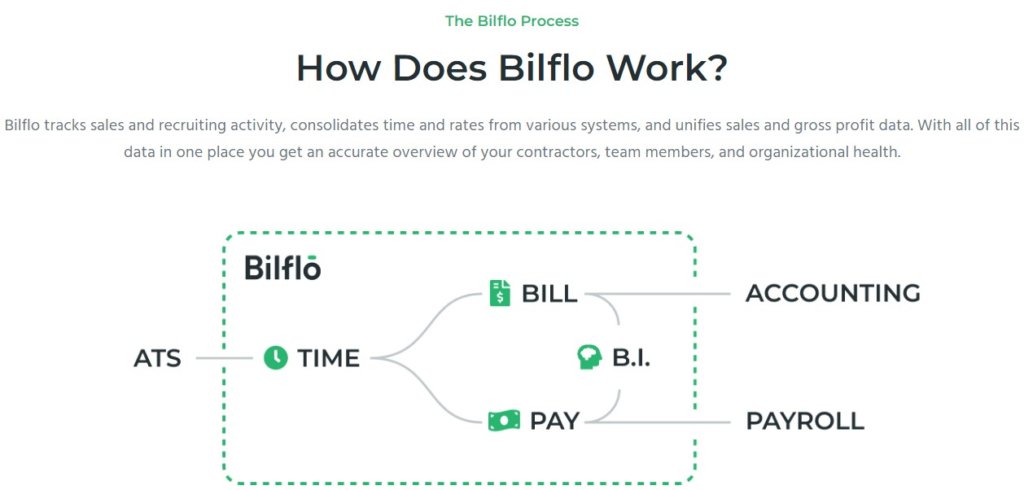How to Build the Right Tech Stack for Your Staffing Firm
Having the right tech stack is critical to optimizing your staffing firm’s business operations. But what exactly is a tech stack? And how do you build the right tech stack for your staffing firm?
Your tech stack is the set of technology tools that your staffing firm employs to achieve its objectives. It is the backbone of your company, supporting the work of your recruiters, administrative staff, and employees.
Why does your tech stack matter in today’s staffing landscape?
Choosing the right technology allows your staffing firm to remain competitive in the marketplace.
In today’s market, there is still a scarcity of qualified job candidates. This makes it more important than ever to reach, screen, hire, and onboard employees before your competitors—and to keep them.
Technology can help you boost your recruitment efforts by automating processes and workflows.
When your recruiters are preoccupied with administrative tasks, they have less time to contact job candidates. Automation allows you to accelerate tasks like sourcing and screening, allowing your recruiters to reach out to more candidates.
You can use technology to enhance the candidate and employee experience.
The right technology stack will make it easier for applicants and employees to fill out paperwork, search for open positions, and communicate with your staffing firm. When you create a positive candidate experience, your employees and job applicants are more likely to recommend your company, which boosts your reputation and generates more referrals.

Building a Successful Tech Stack
Things to consider when building your tech stack:
1. Business Goals: Consider what business goals you are trying to achieve with your tech stack, such as improving customer experience, increasing efficiency, or reducing costs. This will help determine which technologies are most appropriate for your needs.
2. Compatibility: Integration is important for a variety of reasons. It is necessary for increasing efficiency, eliminating redundancies, and creating a unified system. Integration helps to avoid duplication of effort, thus reducing costs and improving workflow. It also allows for improved data management, as data from multiple sources can be consolidated into a single source
3. Security: Security should be a top priority when building a tech stack. Ensure that the technologies you select have secure authentication systems and data encryption.
4. Scalability: Consider how the technologies you select will scale with your business as it grows. You want to ensure that you are not limited in the future.
5. Budget: Make sure you are aware of the cost of the technologies you are selecting and that they fit into your budget. Additionally, consider the ongoing costs of maintenance and upgrades.
Software solutions to include and why they are important.
- Applicant Tracking Systems (ATS): ATS software is important because it helps businesses manage their recruitment process. It allows them to track and manage job applications, keep up with applicant information, and automate processes like resumes, job postings, and interviews. It also helps businesses create a better candidate experience and make sure they are hiring the best people for their business.
- Customer Relationship Management (CRM) Software: CRM software helps businesses manage customer relationships. It allows them to track customer information, manage customer interactions, and create marketing campaigns. With CRM software, businesses can better understand their customers and build better relationships with them.
- Recruitment Marketing Solutions: Recruitment marketing solutions help businesses attract the right candidates to their open positions. They allow businesses to create campaigns, track the success of their recruitment efforts, and optimize their strategies. This helps businesses find the right candidates and ensure they are hiring the best people for their business.
- Timekeeping Solutions: Timekeeping solutions help businesses track employee hours and manage payroll. They can help businesses monitor employee attendance, manage employee schedules, and create reports. This helps businesses be more efficient and accurate when it comes to managing their payroll.
- Billing and Invoicing Software: Billing and invoicing software is important because it helps businesses track and manage their invoicing and billing processes. It allows them to quickly create invoices and track payments. This helps businesses ensure they are billing their customers accurately and on time.
- Business Intelligence: Business intelligence helps businesses make better decisions. It allows them to analyze data, create reports, and identify trends. This helps businesses make more informed decisions and stay ahead of the competition.
Conclusion
Any new technology should be approached with caution, especially if it represents a significant investment. However, staffing tech stacks are no longer a new technology. They are, in fact, proving to be a necessity.
Staffing firms must shift their focus from working IN the business to working ON their business. And that work should be centered on the creation of a fully functional technology stack. Because, when done correctly, a technology stack has the potential to transform your organization into something far greater than the sum of its parts.
With Bilflo, we make it simpler to manage your technology stack by giving you a single point of control and visibility into your entire tech stack. This helps you to monitor performance, identify areas of improvement, and make informed decisions about how to manage your tech stack.
When you have all of this functionality in one platform, you improve the efficiency of your staffing firm by making it easy for your team to perform their day-to-day tasks without having to switch between multiple tools.
Looking for a software provider with industry-leading technology solutions? Contact our team to learn more.


